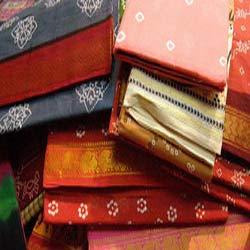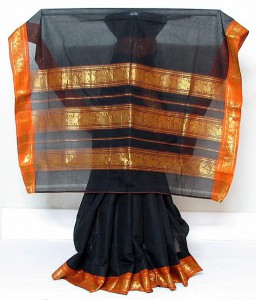
Madurai Textiles
What comes to your mind when you think of Tamil Nadu? The exquisite temples, the delectable cuisine, or the amazing richness in traditions and culture that becomes so apparent the moment you set foot in this spectacular state? Well, while all this is very true, we would like to showcase another aspect of Tamil Nadu that cannot be overlooked and that it their prosperous traditions in textiles, majorly Sarees.
Known for its cotton and silk sarees, Tamil Nadu operates the production of these sarees from various cities such as Karur, Salem, Kanchipuram, Coimbatore, Pudukkotai and Madurai. Madurai, in particular, is known for its cotton textiles, which are of fine quality and durability. Madurai is located in the textile valley of Tamil Nadu and exports a lot of cotton around the world. The fine quality of its cotton has attracted a lot of foreign investments and its handlooms are popular the world over. In fact, Madurai has been a textile hub of Tamil Nadu for centuries and still it has streets that are lined with cloth shops whose textiles are manufactured in Madurai.
Origin & History
The cotton textiles of Madurai have always been popular. During the British rule, when a lot of cotton block printed fabric became popular throughout the world. In fact, a lot of the textiles in Madurai are inspired by the various embroidery and weaving forms that were brought to the city through Muslim, Portuguese and the Dutch migrants/travelers.
Type of Textiles
If one were to point out one very popular textile that is unique to Madurai, then that would be the Chungidi or Chungadi of Madurai, which is available in various forms of merchandise such as saris, dress materials and even bed sheets. Chungidi of Madurai is a name that has become synonymous to the cotton sarees that is actually the method terminology in which, the patterns are created. The method of tie and dye is not only different with different patterns that result from it, but the colours used are also very few, namely red, black, blue and purple.
Style & Inspiration
The patterns are inspired by geometrical prints called Kolam and Rangoli prints. The border of the sari is in contrast to the main body of the sari, hence the Chungidi is basically two-coloured. In fact, the technique of tie and dye came to Madurai centuries ago through the migrant artisans from Saurashtra, Gujarat, who eventually settled in Madurai and initiated a rich heritage of cotton textile printing.
Another popular feature about the unique Chungidi saree of Madurai is the style of draping this piece of garment. In fact, the style of draping this sari is also termed as the ‘Fisherwoman style’.
The other most popular sari from Madurai is the Sungudi saree, which can also be termed as an ‘Eco-friendly sari’. The Sungudi sari is made out of fine cotton threads, embellished with tiny dots all over the main drape and it has intricate embroidery over the border. Much like the Chungidi saree, the Sungudi also has a border that is in a contrasting color to the body of the saree. The distinctive quality of this saree is that it is very thin and light, made out of fine cotton, hence it is perfect for the summers.
The reason why the Sungudi can be called an ‘eco-friendly’ sari is because the dyes used in coloring the cotton threads are extracted from leaves and hence do not cause allergies. This sari is longer than other saris and has been around for more than a century now. Again, this sari was a creation by the Gujarati Saurashtra migrants who wanted to create something different, which was appreciated in the South.
Earlier, the Sungudi and Chungidi sarees were worn on special occasions like Diwali and Pongal, however, now they are also worn on a regular basis. Being a heat absorbent hence makes it an expensive product.
Present Day Scenario
The Union Ministry of Textiles is making a lot of efforts to support the dying art of making the Sungudi saris in Madurai, as the craft is slowly diminishing. There are many steps taken for the revival of the handloom of Sungudi sarees by supporting the artisans, particularly because of the fact that they are very popular throughout India, particularly in Northern India.
Innovations
A lot of designers are also trying to give a twist of modernity to the humble Sungudi sari to bring it into the limelight of fashion. These easy to maintain saris are particularly popular because of the fine cotton that suits the Indian tropical climate. There are initiatives to showcase new designs within the regular Sungudi designs such as the butterfly and peacock designs that would make the saris appear more contemporary and appealing.
Maintenance
These saris do not leave color and can be hand washed, hence, they are very easy to maintain.
Reference
Categories: Motifs & Embroideries

